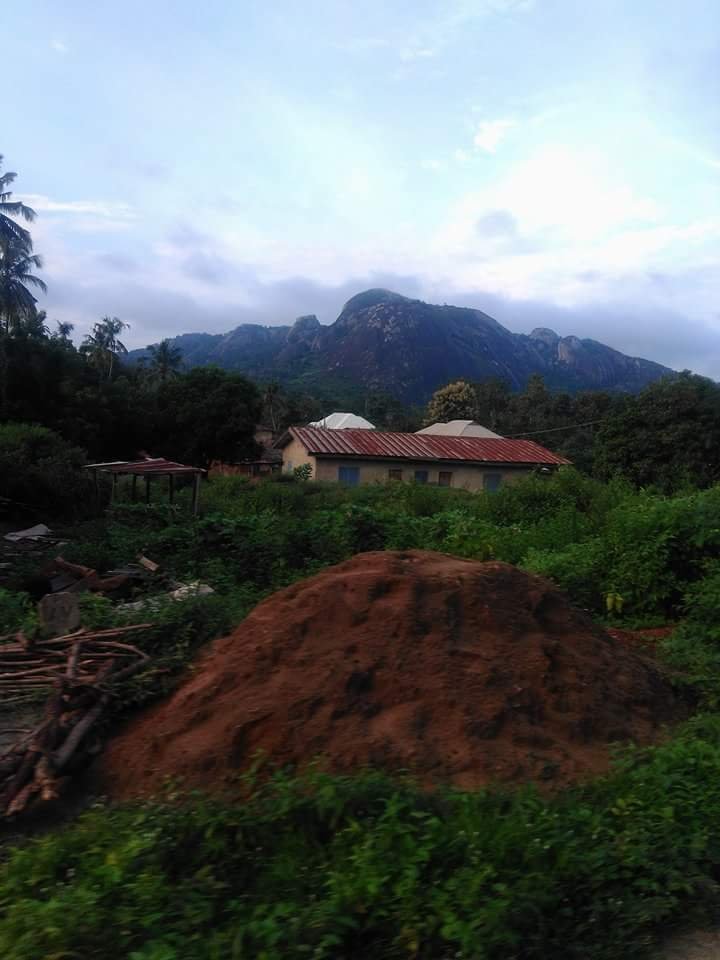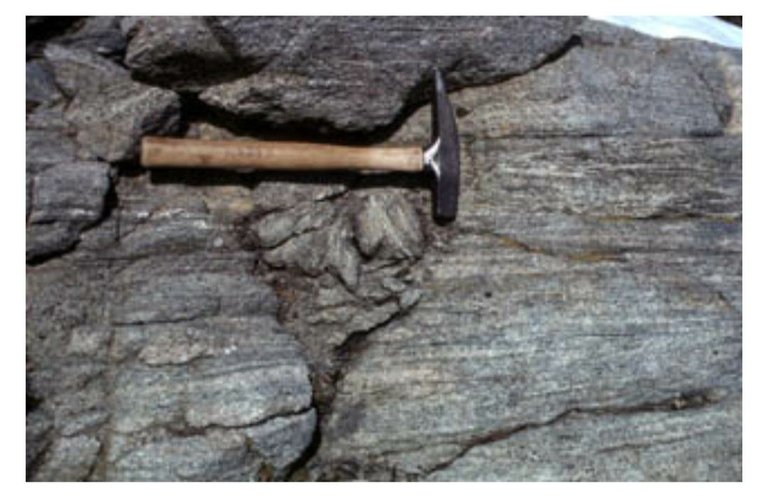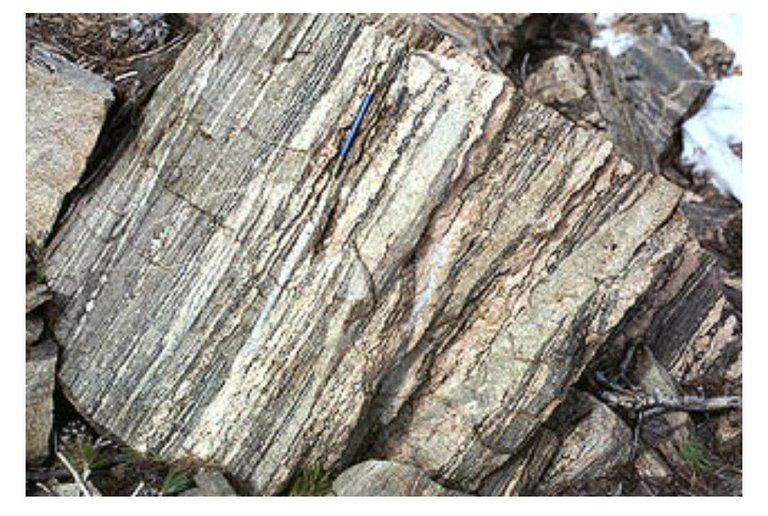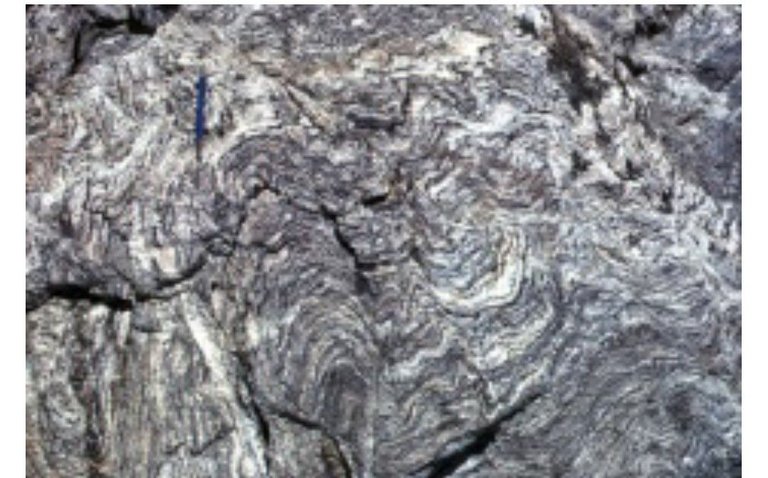Regionally, the Basement complex rocks have been affected by a number of metamorphic and orogenic events as exemplified by the dyke structures in the schists and metaconglomerates. Well in this outcrop we have various rocks, like
- Gabbro
- Gneiss
- Granite
And mineral present in the rock:
Quartz,mica,biotite,feldspar.
Lets go on with the rest of the adventures.see you at the top


Here is a short clip of the landscape:
Study show that the schist bodies immediately adjacent to the granite intrusion have fine to medium grains and poor foliation compared to other schist bodies.
On the other hand, the granite bodies nearer the schist and metaconglomerate are fine grain and tend to coarse as you move up the plutons with the pegmatites found around the middle of the pluton, quartz veins, syenite dykes, lamprophyre dykes and pegmatite dykes of varying sizes form concordant and discordant structural features which reflect the presence of zones of weakness in the country rocks which resulted during the emplacement of the granites.
The metasediments (metaconglomerate and schists) are the oldest and form the country rocks which the granites intruded.
The abundance of very large pebbles of varying sizes ranging between (15 – 150cm) within the matrix of the metaconglmerates imply a source very close and that they did not underwent much transportation before the sediments deposited.
And sedimentation must have been followed by a regressive phase which the exposed the sediments. It is also evident that “these sediments (among others) were lain down in a miogeosynclinal environment during the opening of a small sea in the Proterozoic period.
SITE 1
ROCK NAME: Gneiss.
MINERAL COMPOSITION: Biotite, Muscovite, Quartz.
STRIKE: 56ᵒNW
DIP:5Oᵒ

Image source: https://geomaps.wr.usgs.gov/archive/scamp/html/scg_esaf_pbxln.html
VIEW OF AN OUTCROP OF A COMPOSITIONALLY LAYERED (FOLIATED) GNEISS.
ROCK DESCRIPTION
The rock found in this outcrop is a gneiss.
foliation were observed on some part of the rock.
The veins in some specific area of the rock, the veins are filled with granites, which means that the magma which forms the granite in cooling and solidification must have filled the veins found in the rock instead of quartz.
Intrusion of granitic rocks on the Gneiss from downward which means the Gneiss are older than the Granite.
Presence of metamorphic rock.
Presence of intrusive granitic rock.
Light coloured mineral present
SITE 2
LATITUDE: Nᵒ7ᵒ,17.
LONGITUDE: E003 01.
HEIGHT: 392M.
STRIKE: NW10ᵒSE.
ROCK NAME: Biotite Gneiss.
ROCK COLOUR: Dominant grey with patches of black (biotite).
TEXTURE: Coarsed grained.
MINERAL COMPOSITION: Biotite, Quartz, k-feldspar.
VEGETATION: Thickly vegetated.

Image source: https://geomaps.wr.usgs.gov/archive/scamp/html/scg_esaf_pbxln.html
FOLIATED BIOTITE GNEISS,COMPOSITIONALLY LAYERED GNEISS THAT PROBABLY IS METASEDIMENTARY IN ORIGIN.**
ROCK DESCRIPTION
*Fracture observed (dextral).
*Foliation observed.
*Quartz veins are observed in most part.
*The grains are not in mutual contact with each other and are not well shaped.
**SITE 3**
ROCK NAME: Biotite Quartz
ROCK COLOUR: Dominant grey, patches of black.
STRIKE: NW15ᵒSE
DIP:70
MINERAL COMPOSITION: Mica, Quartz.
TEXTURE: Coarse grained
ROCK DESCRIPTION
Quartz vein observed in the rock, the quartz vein is not faulted.
Falling of biotite in the fracture.
Foliation observed .
**SITE 4**
ROCK NAME: Granitic Gneiss
COLOUR: Grey/black.
TEXTURE: Coarse grain
MINERAL COMPOSITION: Quartz, Feldspar, Biotite.

Image source: https://geomaps.wr.usgs.gov/archive/scamp/html/scg_esaf_pbxln.html
CONTORTION OF THE MAFIC AND FELSIC LAYERS INTO SMALL FOLD IN THIS GNEISS.
ROCK DESCRIPTION
*Foliation observed.
*Lineation observed.
*Granitic veins were observed on top of the Gneiss.
*Granite was dominant.
This outcrop shows metamorphic rocks that look considerably different today than the geologic materials first were formed.
The rocks began life either as sedimentary materials deposited in a marine environment or as igneous materials or granitic composition.
Whatever their original origin, the parent rock (protolith) was subjected to high temperature and strong directed forces (stress) that reconfigured the original mineral components into the conspicuous dark and light colored (Mafic and Felsic) layers that characterize the outcrop.
Well, my stay here was great, i enjoyed the cow meat especially, fresh air, landscape was superb, nature was at its peak.
I want to thank you all my followers, friends, proffessor, collegues, well wishers, and my faithful driver. Thanks for being there for this expendition and adventures.



My Prof is still great geologist, boss of all field adventures. His helping my friend up the this rock⬆⬆⬆🔝


Banner 1 designed by steemitblogger @zord189
Other images were shot by my infinix phone.
#untalented
@originalworks
The @OriginalWorks bot has determined this post by @barineka to be original material and upvoted it!
To call @OriginalWorks, simply reply to any post with @originalworks or !originalworks in your message!
This post received a 80% upvote from @morwhale team thanks to @barineka! For more information, click here! , TeamMorocco! .
STEEM Price : 3.244 $
This post received a 1.254 SBD (95.58%) upvote from @upvotewhale thanks to @barineka! For more information, check out my profile!
Nice work, very detailed and descriptive